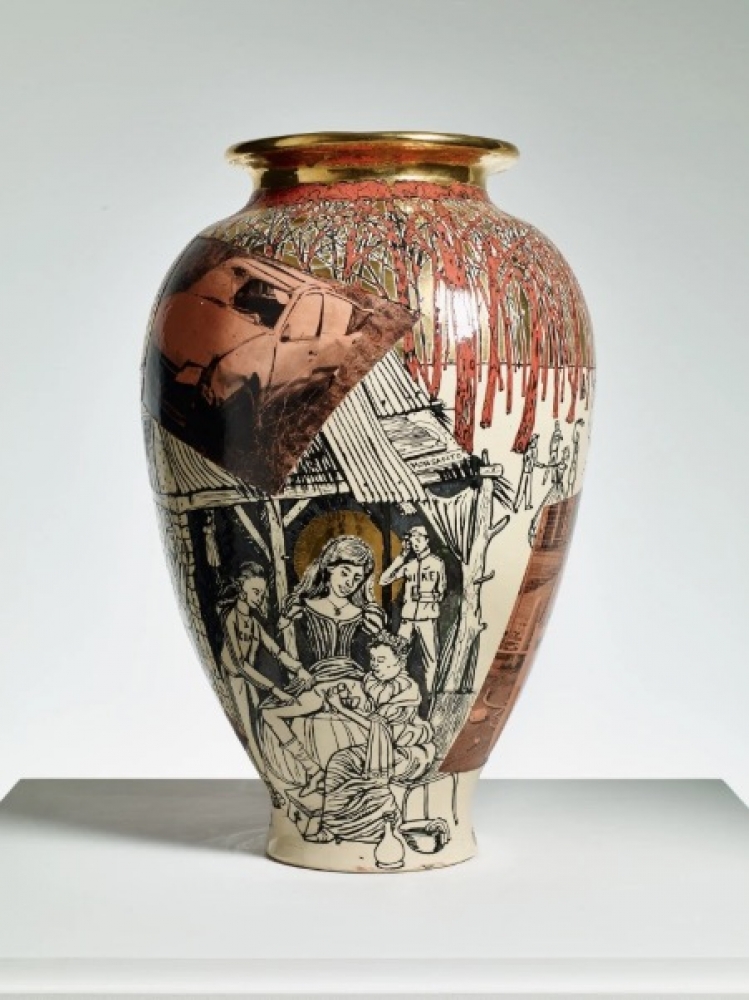Christian Holstad, Grayson Perry, Tal R, Betty Woodman
This exhibition brings together ceramic works by four artists who, through a diversity of approaches, explore the possibilities of the medium: its fluidity, in spite of an undeniable physicality, in relation to genres such as painting and sculpture, and equally flexible capacity for both figuration and abstraction.
Working across a variety of media, New York-based artist Christian Holstad (born 1972) has often examined the conceptual and aesthetic resonance of the vessel as part of a wider enquiry into cycles of consumption and their effects on the world. Many of his recent ceramic works are the result of an extended period living and working in Faenza, Italy, which is home to the historical manufacture of majolica ware known as faience. Working closely with Italian ceramicists, Holstad has developed new ways of working with clay that expand on the techniques – variously American, English and Japanese – to which he was already accustomed. The resulting works, which include masks, bowls, pots, pans and cornucopias, are charged with references to the domestic and pose questions about what or who is being consumed, and by whom.
Grayson Perry (born 1960) uses the seductive qualities of ceramics and other traditional art forms to make stealthy comments about society, its pleasures as well as it injustices and flaws, and to explore a variety of historical and contemporary themes. He interested in how each historic category of object accrues intellectual and emotional baggage over time. A great chronicler of contemporary life, Perry tackles subjects that are universally human: identity, gender, social status, sexuality, religion. Autobiographical references can be read in tandem with questions about décor and decorum, class and taste, and the status of the artist versus that of the artisan.
As part of an expansive practice that includes painting, drawing, print, collage, textiles, sculpture and furniture design,
Tal R (born 1967), explores the tactile, expressive and alchemical nature of ceramics in works that exuberantly range across abstraction and figuration. A concise selection of works from the past decade includes standing figures and heads, their forms and features variously modelled and glazed, ranging from the near-abstract Onkel (pink), 2009, a sphere given surprising character by the inclusion of two holes that read as doleful eyes, to the fully realised, totemic Hyacint, 2008.
Throughout her career, Betty Woodman (1930–2018) investigated a variety of techniques to transform her medium while resisting and disrupting its conventions. For more than 50 years, Woodman lived and worked for part of each year in Antella, Italy, and the classical tradition, in particular the dialogue between painting and architecture in Roman art, was a fundamental influence on her work. Characterised by a lightness of touch and an exuberant use of colour, Woodman’s works, such as Venus #5, 2013, and Pranzo, 2017, on view here, investigate the expressiveness of the vase in both two- and three-dimensional form, as iconic object and as part of expanded tableaux.

